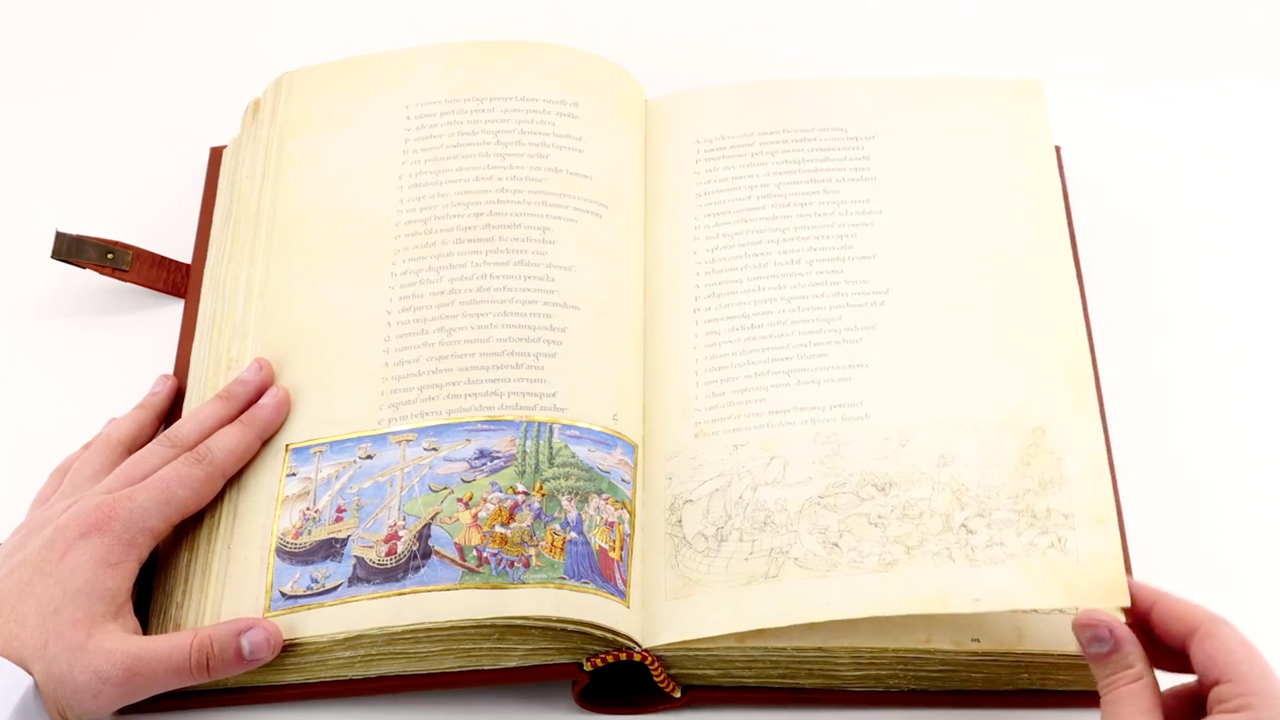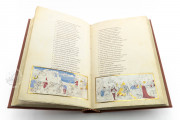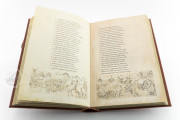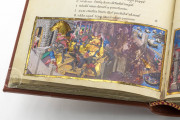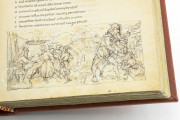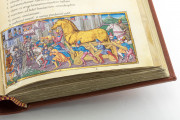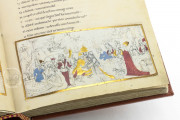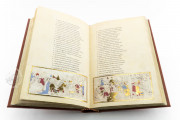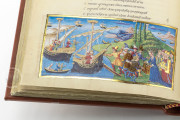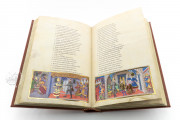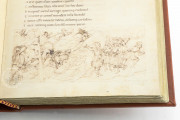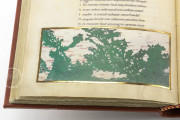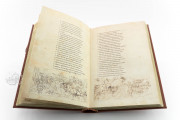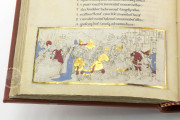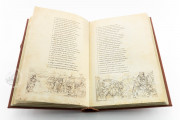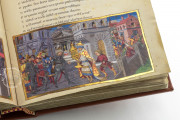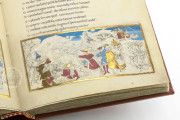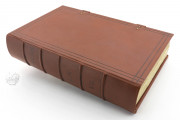The elegant manuscript known as Riccardiana Virgil contains three main works of Vergilius Publius Maro: the Eclogues, the Georgics, and the Aeneid. The illuminator, Apollonio di Giovanni, decorated the book for the court of the Medici or for a family close to the Medici. A Renaissance manuscript of extreme interest, this codex displays illuminations in which Aeneas' journey unravels in the splendid Florence of the time of Lorenzo il Magnifico.
Pictures of Florence in the Renaissance
The codex containing Virgil's writings in Littera Antiqua script is made of high-quality and well-prepared parchment. The layout of the pages and the writing are extremely refined. The scribe, Niccolò Riccio, signed his work in the colophon (fol. 254v). He was part of the workshop of Vespasiano da Bisticci, friend and biographer of Cosimo il Vecchio de' Medici.
The codex is a remarkable witness of the city of Florence in the Renaissance. The miniatures represent the architectures, the clothing, and the shops that one could have found in Florence in the fifteenth century. Eighty-eight miniatures decorate the lower border of the pages at the beginning of the Eclogues and Georgics, and the entire Aeneid up to folio 105, where the text is interrupted at the end of Book 3. The last miniatures are left unfinished, either partially painted or sketched.
The Illuminations of Apollonio di Giovanni
The illuminations are attributed to Apollonio di Giovanni, who interpreted the scenes of the Virgilian poems in a contemporary fashion. The narrative appears in the context of the Renaissance aristocratic courts. The setting and clothes represent the contemporary Renaissance world of the years fifties and sixties of the fifteenth century.
There are several representations of Palazzo Medici, which appear as the residence of Priam in Troy. Several other monuments are also identifiable, namely the Baptistery of Florence, the Tower of Pisa, the Church of Haghia Sophia in Istanbul, the Trajan Column, and the Pantheon in Rome.
Although the manuscript was left unfinished, it still constitutes a remarkable witness of the fifteenth-century techniques and process of making books.
We have 1 facsimile edition of the manuscript "Riccardiana Virgil": Virgilio Riccardiano facsimile edition, published by ArtCodex, 2002
Request Info / Price
